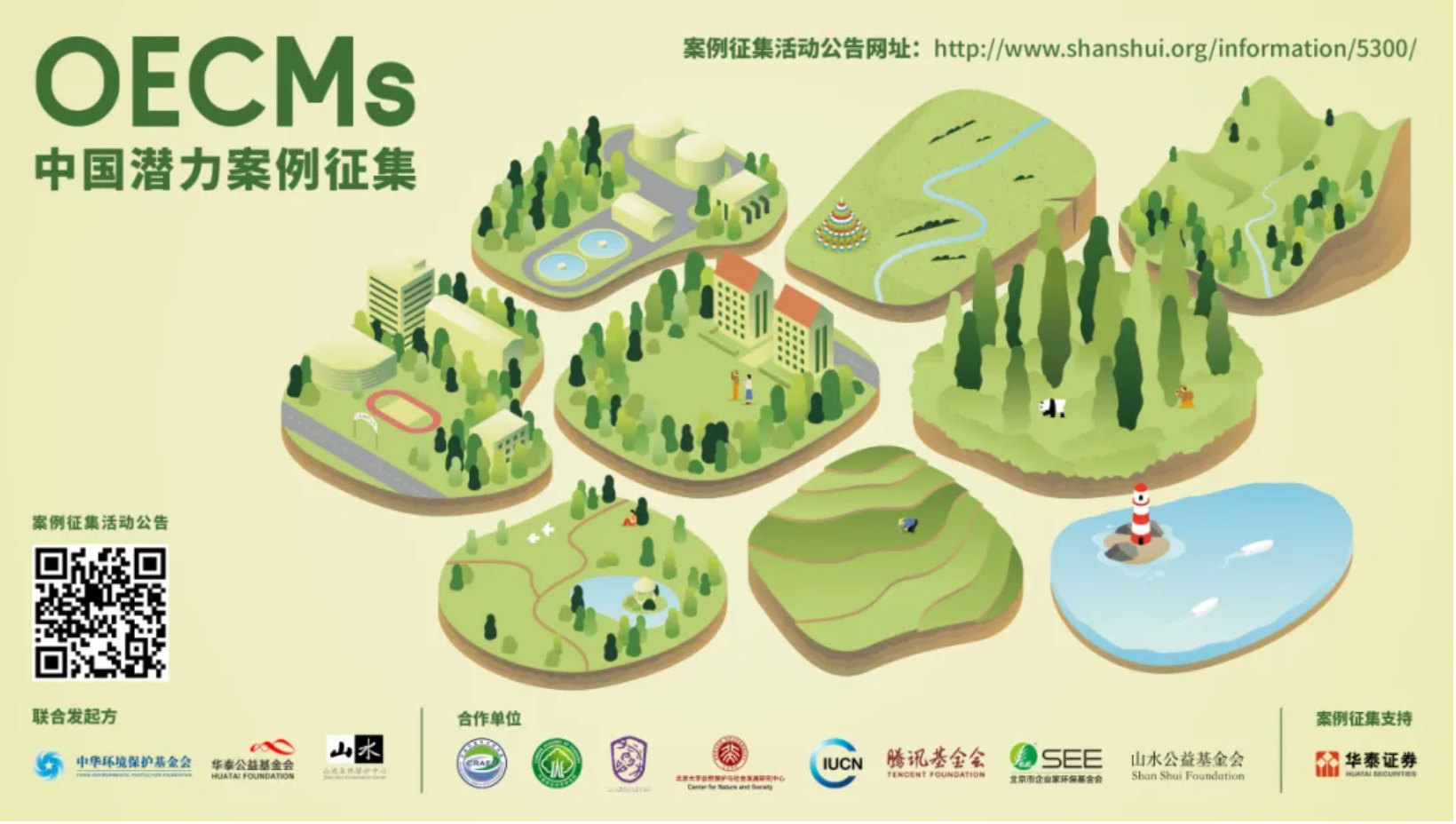China’s First Potential OECM Cases Released at COP16, Advancing its ’30×30′ Conservation Target
By Shanshui Conservation Center & Shenmin Liu, ILCN Regional Representative for Asia
On October 21, 2024, China released its first 12 potential Other Effective Area-Based Conservation Measure (OECM) sites, plus an additional 34 shortlisted sites. The announcement was made to a global audience at a side event of the 16th United Nations Biodiversity Conference (COP16) in Cali, Colombia. The announcement supports China’s commitment to achieving Target 3 of the Kunming Montreal Global Biodiversity Framework, which aims to protect 30 percent of the planet’s lands and waters by 2030. China’s OECMs will be backed by a first-of-its-kind funding source, also announced at the side event.

OECMs are areas that lie outside designated protected zones but that achieve effective and long-term in-situ biodiversity conservation. Countries around the world are exploring OECMs as a more inclusive approach to biodiversity conservation that welcomes various governance models, including private, community, and co-governance arrangements. China has many sites that play this role, but none that are formally designated as OECMs under the guidance provided by the International Union for Conservation of Nature (IUCN).
Now, that is changing.
As the host country of COP15 in 2022, the world had its eyes on China. Leading up to this year’s event. COP16 served as a milestone and evaluation point for nations that committed to measurable biodiversity goals like 30×30 two years prior. China was one of only 25 nations that submitted its updated national biodiversity strategy and action plan (NBSAP) by the start of COP16, an important deadline that 85 percent of nations that pledged to do so missed. In coming years, OECMs are set to become an integral part of China’s NBSAP as indicated by an expert meeting held in May 2023 and its resulting OECM stocktaking report.
China further exemplified conservation progress at COP16 by taking an important step toward implementing OECMs on the ground, laying the foundation to further explore OECM pathways and mechanisms. Selected from 90 submissions, 46 potential OECM sites will protect forests, shrublands, grasslands, wetlands, farmlands, urban areas, deserts, and marine environments. The cases were submitted by a variety of entities, including NGOs, universities, businesses, village committees, and cooperatives. Together, they span about 320,000 acres (129,000 hectares) and support conservation of rare and endangered species, including the Amur tiger, snow leopard, giant panda, Yunnan snub-nosed monkey, Chinese pangolin, Baer’s pochard, and the spiny frog.
The selection process included document review, expert evaluation, field investigations, and case announcements. The 12 selected sites include Beijing’s Wenyu River Park, Peking University Campus Nature Conservation Area, and Wuqinzhang Chinese Pangolin Conservation Area. Siwu Nature Park in Hanzhou, China—which is led by ILCN Regional Representative for Asia, Shenmin Liu—was selected as a shortlisted potential OECM site.

The initiative was supported by the Department of Natural Ecology and Environment of China and jointly launched by China Environmental Protection Foundation, Huatai Foundation, and the Shan Shui Conservation Center in collaboration with several civil society groups.
The OECM sites will be funded by China’s first dedicated OECM fund, also launched at COP16. The fund will provide sustainable finance for work related to OECMs including research and standard setting, workshops, capacity building, and on-the-ground implementation of OECMs in China.
Have news? Share updates from your organization or country by emailing lrobinson@lincolninst.edu.
